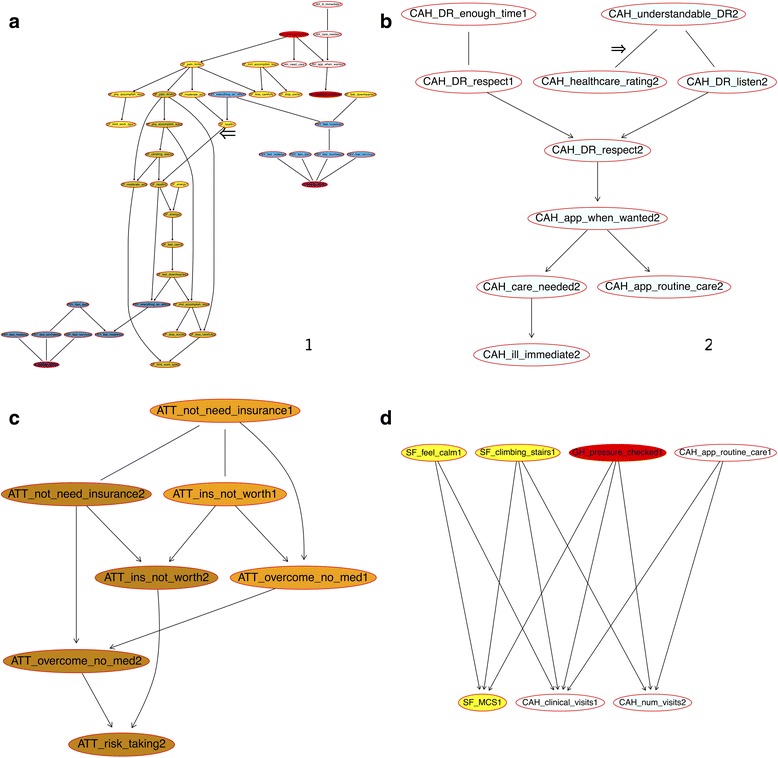Fig. 2.

The networks of patient-reported outcomes and health care quality indicators among the MEPS interviewees age 18 years and over between 2004 and 2011. a The largest network consisting of 42 variables. b The second largest network consisting of only the CAHPS variables about the patient experiences in health care. c The network consisting of the variables related to attitudes about health and insurance. d The network consisting of the variables related to health care needs and appointment making. Note: The Bayesian network learned with the Max-Min Hill Climbing (MMHC) algorithm and 10-fold cross-validation. Transparent node color = health care quality (CAHPS) and demographic variables; red = general health; yellow = SF12; blue = non-specific psychological stress; pale green = patient health questionnaire (PHQ-2); orange = attitude about health; and purple = Kessler Index. The numbers in the end of the short names of the variables are the years of the Medical Expenditure Panel Survey that follows up individuals for two years. The shaded colors are for the year-2 variables only
